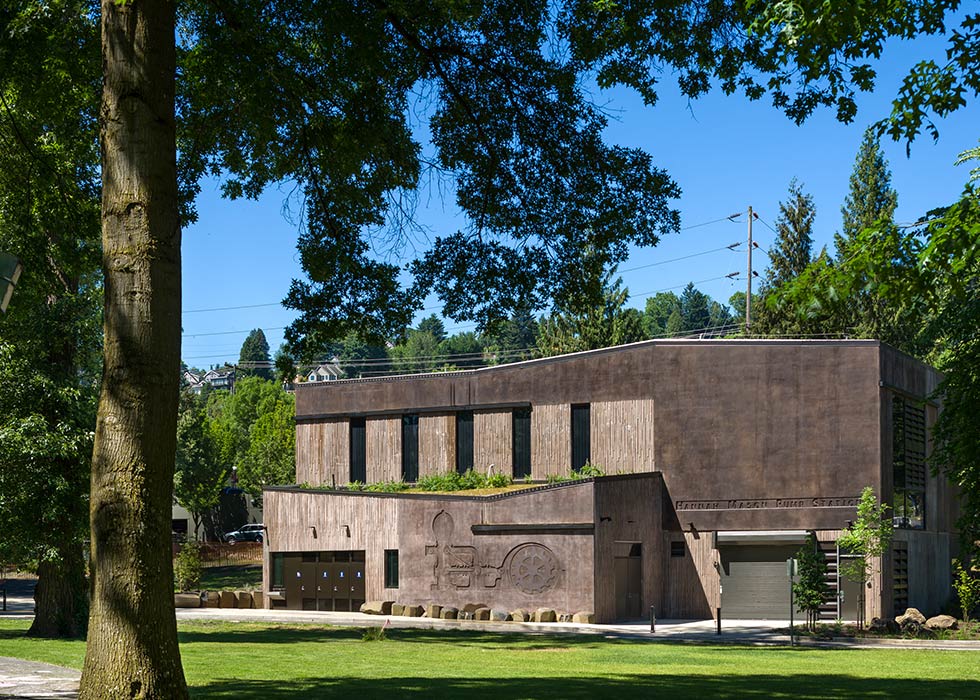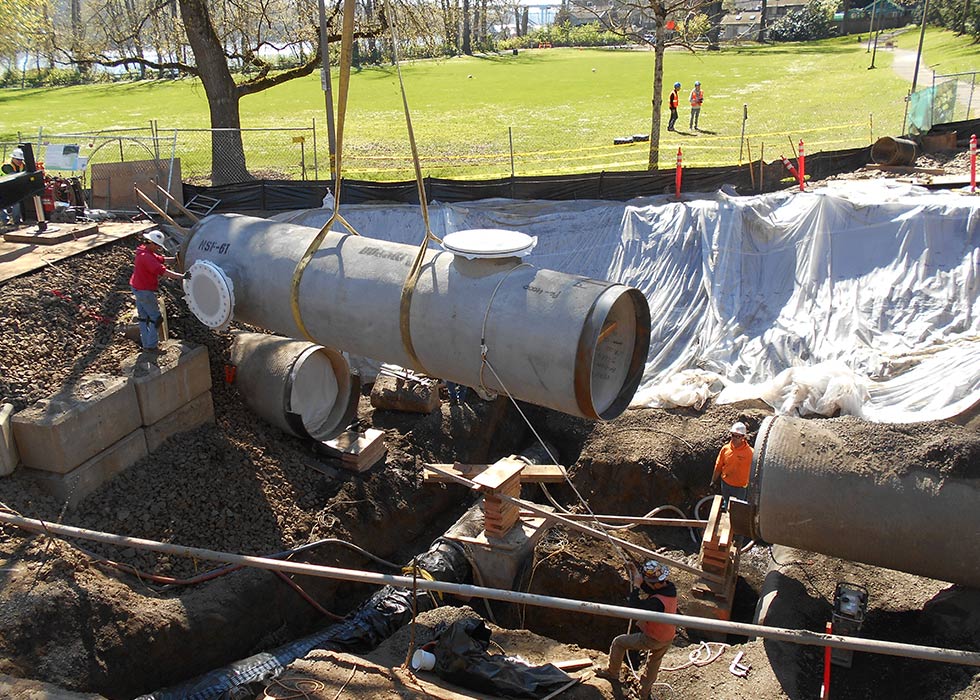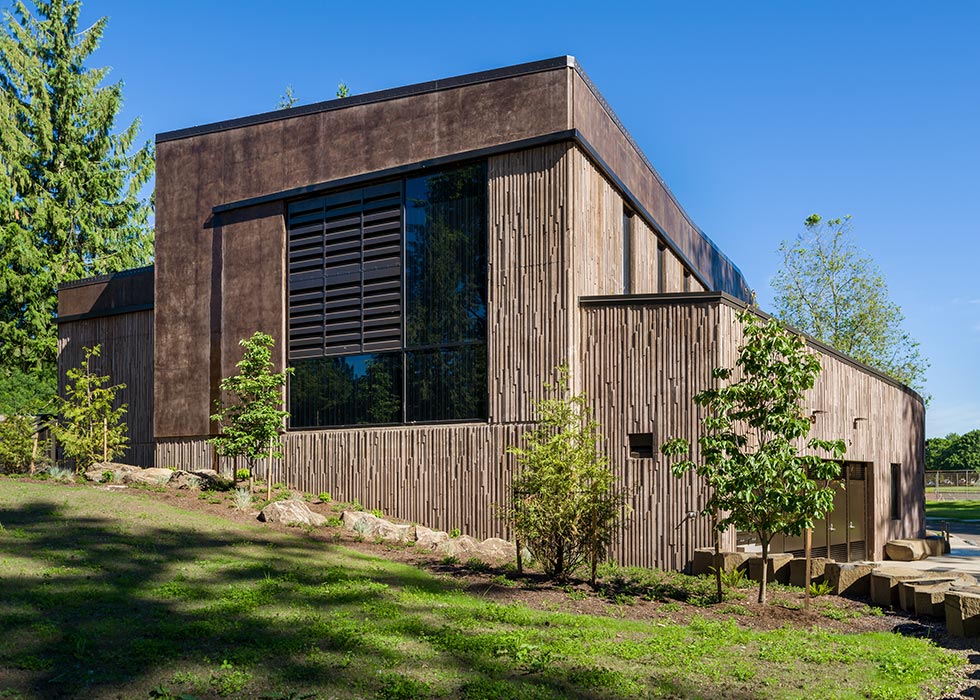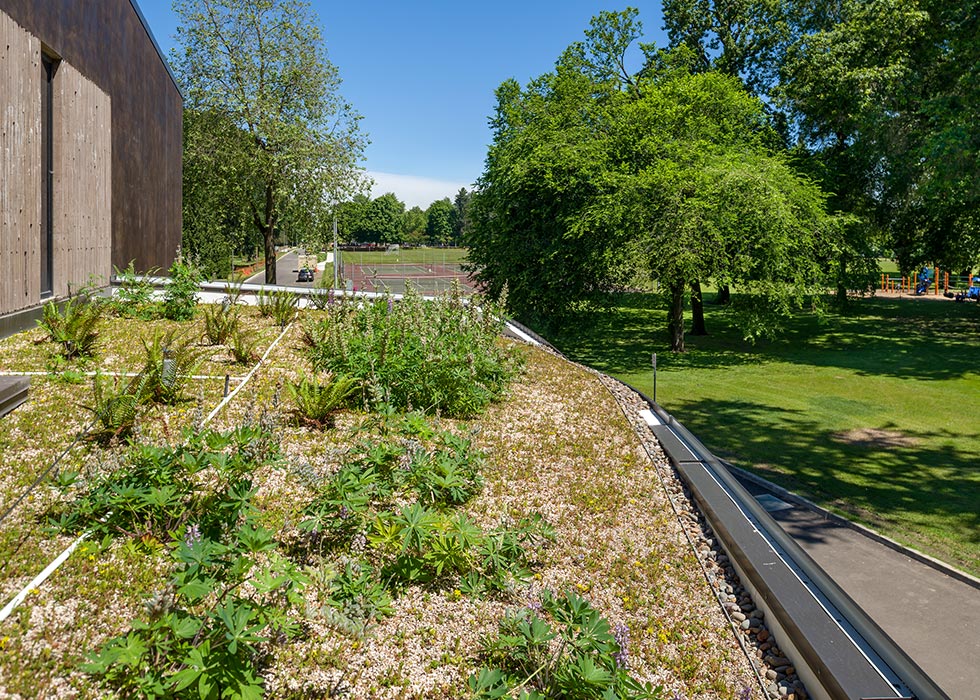
Hannah Mason Pump Station
The success of the Hannah Mason Pump Station project hinged upon timely completion of a complicated permitting process, finding innovative solutions to the practical problem of constructing within the Willamette River floodplain, and especially upon the public’s acceptance of the structure located in a prominent public park. These obstacles were nontrivial, but the opportunities afforded by the site allowed the team an exciting vision to guide the project’s success. By the end of construction, the Portland Water Bureau (PWB) and its customers had gained a critical piece of drinking water infrastructure, designed with sustainability, operational flexibility, and energy efficiency at the forefront. Willamette Park and its visitors gained improved and expanded ADA accessible public restrooms, new bike parking, and, if they wish to, a chance to interact with the infrastructure that helps to bring clean water to their taps every day.
Portland Water Bureau’s Fulton Pump Station was nearly 100 years old when it became apparent that upgrades to increase long-term capacity and reliability were necessary. As a 12 MGD facility, it provided water to over 36,000 people in southwest Portland, while also supplying wholesale water to other municipal agencies. With little room for growth on its existing site, PWB looked across the street to Willamette Park. This allowed them to take advantage of existing water infrastructure and achieve their goals of maximum energy efficiency, high reliability, and improved redundancy for years to come. The site met those criteria but also posed significant challenges. In addition to designing the pump station to operate efficiently on two very different suction pressures, the design team had to wade through floodplain development regulations, constraints to PWB operation practices due to City park rules, a complex land use approval process, concerns by an active and engaged neighborhood, and a review by the Portland Design Commission.
PWB’s design team, managed and led by Consor, successfully navigated these obstacles with the design of a highly efficient and versatile pumping station (the pump station includes five vertical turbine pumps, and can provide up to 18 MGD in the future) housed in a distinctive yet unobtrusive building, while reducing wire-to-water energy consumption by almost 50% compared to the old station. The facility was built on land owned by Hannah Mason in the late 1800’s and was named in honor of her philanthropic deeds to the City of Portland. Upon completion, the project demonstrated it met PWB’s efficiency targets and earned a $500,000 incentive check from Energy Trust of Oregon.
Project Highlights
- Received $500,000 rebate from the Energy Trust of Oregon
- New 18-mgd station
- Integration of public park amenities
- Seismic design considerations
- Community input incorporated into design
- Connection to higher-head Washington County Supply Line for energy savings


